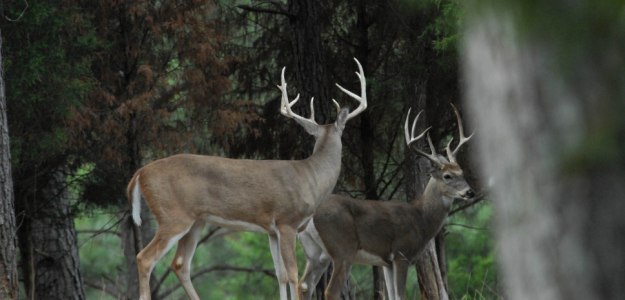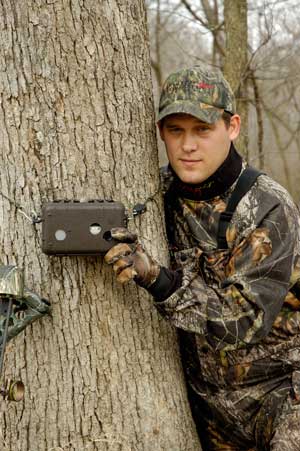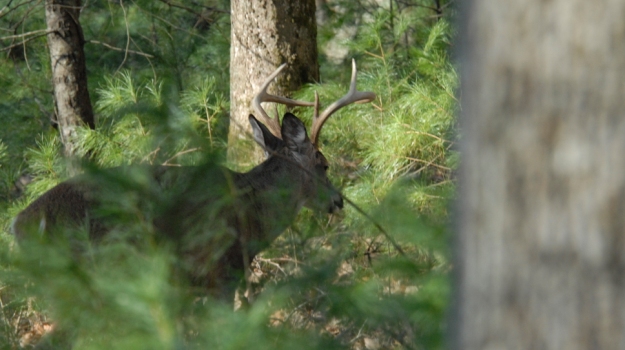
Editor’s Note: Dwayne Norton lives in Troy, Missouri, about an hour northeast of the arch in St. Louis. He’s been hunting deer for 35 years, and he's been a Mossy Oak pro for eight years. His favorite camo pattern is Mossy Oak Break-Up Infinity, although he uses several different Break-Up patterns. In 2015, Norton fulfilled a lifelong ambition of going elk hunting.
Our family doesn’t believe we have any older-age-class bucks actually living on our land in Missouri. So, we try to pull deer off other properties by providing food and sanctuary. We don’t have any trails through our property; we don’t use 4-wheelers on our land; and we don’t camp there. Those properties are strictly for hunting. We want to have as little impact as possible on the land we hunt. We want deer to come to our properties for sanctuary; we want them to travel through our properties going to other places; and we want them to be able to get a mouth or two of food, if they’re traveling or holding there to dodge hunter pressure. We set-up our lands to pull bucks off the Wildlife Management Areas in the region and our neighbor’s property that receives a lot of hunting pressure. We've learned that by hunting less but hunting strategically, we can take more mature bucks than if we hunt our land heavily. When I say we hunt strategically, I meant that we don’t hunt a stand site unless the wind is right to hunt from that stand site, and we only hunt our stands when we feel like the opportunity is the best for taking an older-age-class buck.
We are absolutely trail camera crazy. My mother says that I have a trail camera or a tree stand on every tree on the farm, and we have pictures of bucks for several consecutive years. That’s how we know that these three properties we hunt in Missouri are travel corridors, and bucks aren’t setting up residence on these three properties.
 Although our bow season comes in on September 15, we only hunt these properties the last 3-4 days of October through the first 10 days of November. Something else that’s happening during the first half of bow season is farmers start harvesting their crops. So, the deer that have been feeding and bedding in those crops all summer long now have to move into the woodlots, CRP land or onto the WMAs. The WMAs usually receive plenty of bowhunting pressure during daylight hours.
Although our bow season comes in on September 15, we only hunt these properties the last 3-4 days of October through the first 10 days of November. Something else that’s happening during the first half of bow season is farmers start harvesting their crops. So, the deer that have been feeding and bedding in those crops all summer long now have to move into the woodlots, CRP land or onto the WMAs. The WMAs usually receive plenty of bowhunting pressure during daylight hours.
I'm a slave to the wind. If the wind’s not perfect to hunt from a stand, I won’t go to that stand. I’ll only go to a stand when the wind is in my favor. I’m also really careful and take a lot of time going to and coming away from my stand, because my number-one goal is to not spook a deer off the property. As long as I'm not spooking deer, I know I have a chance to take older-age- class bucks. If I see deer around my stand where I want to hunt, and I know I’ll spook the deer if I try to get to the stand, I won’t go to that stand. I’ll go to a stand close-by to hunt. I’ll use my binoculars to watch the deer at the stand. I want to hunt to learn what they’re doing, and where they're going. I'm a defensive hunter. Most hunters go into the woods to try and take a deer and hope they don’t spook a deer. I go into the woods determined not to spook a deer and possibly take a deer. I think that the more conscious you are about not spooking deer, the greater your odds will be for taking a mature buck.
To learn more about hunting, check out John E. Phillips’ new eBook and print book, “Bowhunting Deer: Mossy Oak Pros Know Bucks and Bows.” You also can download a free Kindle app that enables you to read the book on your iPad, computer or Smartphone.
For information on making jerky from your deer to provide a protein-rich snack, you can download a free book from http://johninthewild.com/free-books.
Day 3: How to Setup Little Properties to Take Big Bucks
Tomorrow: Two Most Important Tools for Harvesting Mature Bucks On Small Properties






























